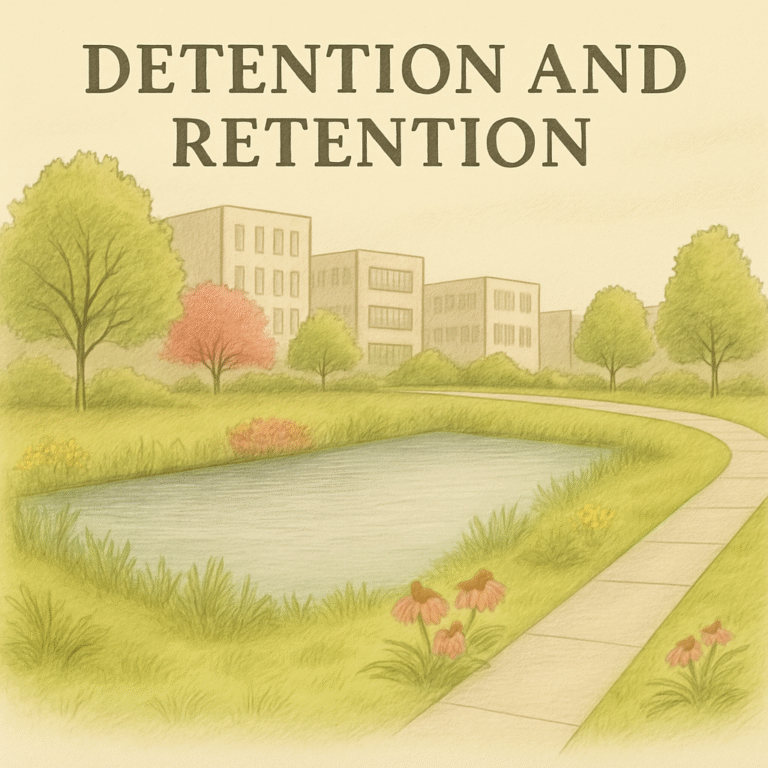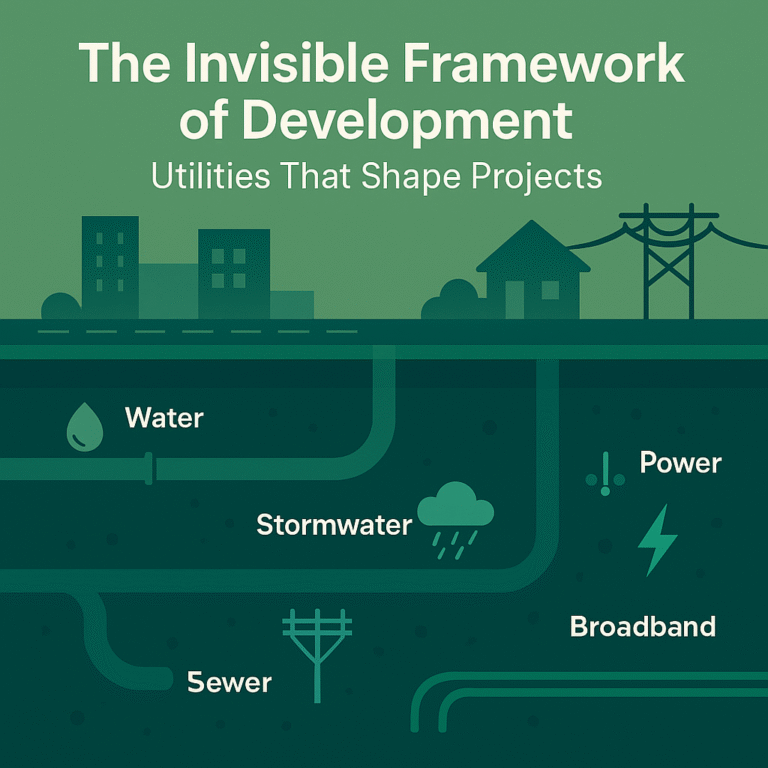How land use strategy, legal clarity, infrastructure realities, and political insight form the backbone of successful development.
Before the first shovel hits the ground, the most critical work on any real estate project is already underway. Developers often talk about vision, investment, or architectural innovation—but behind every smooth entitlement and every built project is a due diligence process that has quietly done its job.
At LAI Design Group, we believe due diligence is where projects are truly made—or lost. Not because it’s flashy. But because it’s where we ask the right questions before commitments are made, and where we learn whether a site supports the intended vision—or quietly works against it.
This article draws from our experience working across hundreds of properties, helping clients make informed land decisions that reduce risk and maximize opportunity. These are the four pillars of due diligence we return to every time:
I. Land Planning & Feasibility: Understanding What You Can Actually Build
The first question in any land deal isn’t “What can we design?”—it’s “What will the jurisdiction let us build?”
Every parcel carries with it an invisible framework: local zoning codes, land use plans, overlays, annexation agreements, environmental constraints, and adjacency considerations. Misunderstanding or overlooking this framework can derail projects long before site planning begins.
At LAI, our approach begins with layered feasibility analysis:
- Zoning Analysis: We evaluate existing zoning, overlays, and use allowances—and determine whether a rezoning, variance, or conditional use process will be necessary.
- Site Constraints: We review slope, floodplain boundaries, riparian setbacks, and protected species or vegetation concerns that may limit buildable area.
- Development Yield Estimates: Based on density limits, setbacks, height restrictions, and open space requirements, we calculate realistic unit counts, FAR, and conceptual layouts that guide pro forma modeling.
By identifying the land’s constraints and opportunities early, we help clients refine their vision before sunk costs accumulate—often adjusting strategy in ways that improve both feasibility and profitability.
Case in point: On a recent suburban infill project, early diligence revealed encumbered access and restrictive zoning. Rather than force the original plan, we guided the client through a targeted rezoning and created a mixed-use overlay that unlocked a higher and better use—with full neighborhood support.
II. Title, Boundaries & Legal Entanglements: What You Own vs. What You Control
Few things in development are more deceptively simple than a clean title report. Yet time and again, we encounter projects with surprise easements, shared access agreements, forgotten mineral rights, or utility conflicts buried deep in appendices.
Your control over land is only as strong as your understanding of what encumbers it.
That’s why our process includes:
- Title Commitment Review: We collaborate with legal counsel and title providers to identify encumbrances, use restrictions, and reversionary clauses—then map them geospatially to understand their real impact.
- ALTA/NSPS Survey Review: We verify that survey boundaries, topography, easements, and encroachments are accurately reflected—and resolve any inconsistencies with title documents.
- Easement Mapping: Where utility, access, or conservation easements exist, we map and overlay them to visualize how they affect developable area and site access.
Overlooking these elements can mean discovering, too late, that your “buildable” parcel has a utility easement cutting through its core or that a neighboring parcel holds irrevocable access rights.
A hard lesson from the field: One client acquired land for townhomes, only to learn mid-design that a prescriptive access route granted a neighbor uncontrolled entry. A process that could’ve been resolved in acquisition became a litigation threat—avoidable had the easement language been mapped and interpreted up front.
III. Infrastructure: The Hidden Cost of Connection
Entitlements might grant you permission—but infrastructure determines what you can actually execute.
We often say: a site without water, sewer, or adequate fire flow isn’t a development site—it’s a liability. Infrastructure due diligence looks past the dirt and zoning to assess the practicality and cost of connecting a new project to the essential systems that support it.
Our infrastructure evaluation focuses on:
- Utility Availability & Connection Feasibility: Is there capacity in the system? How far are the tie-in points? Are there moratoria or conditional connection terms in place?
- Capacity Confirmation: We interface directly with providers to confirm infrastructure load capacity—not just today, but post-buildout.
- Off-Site Improvements & District Fees: Many developers are surprised to discover they’re responsible for off-site upgrades, oversized mains, or participation in special district assessments.
We believe in eliminating surprises before design begins. That’s why we help our clients incorporate infrastructure costs into early pro formas, develop phasing strategies aligned with utility access, and explore alternative solutions like dry utilities, lift stations, or on-site detention—when applicable.
IV. Political Landscape & Public Process: It’s Not Just Paperwork
Entitlements are not granted in a vacuum. Public process is about more than submittals—it’s about storytelling, alignment, and trust.
Every community has its own values, pressure points, and process bottlenecks. Some cities prize walkability. Others want rooftops. Some jurisdictions prioritize speed; others require six hearings and stakeholder sign-off.
Our due diligence doesn’t end at the desk—it extends to the dais.
We guide clients through:
- Entitlement Path Mapping: How many steps does your plan require? What types of submittals, studies, or referrals will be needed?
- Stakeholder Outreach Strategy: Who are the loudest voices? How can the project benefit both the developer and the surrounding community?
- Political Risk Assessment: We flag approval friction points, including recent public sentiment, overburdened planning departments, or councils with shifting development priorities.
Real-world win: On a recent transit-oriented project, our early engagement with neighborhood associations helped reduce opposition, and our design tweaks to reflect community concerns helped the project receive unanimous council approval.
Conclusion: Good Due Diligence Looks Boring—Until It Saves You
The hallmark of great due diligence is often that… nothing goes wrong.
But behind every clean approval, every profitable buildout, and every project that just works, there’s a mountain of research, review, and strategy holding it up.
At LAI Design Group, we believe in doing that work up front—not just because it prevents problems, but because it creates clarity. And clarity builds confidence—for owners, investors, staff, and communities.
Whether you’re eyeing a site, preparing an RFP, or kicking off a master plan—we’d love to talk.
Reach out. Let’s build smarter.




